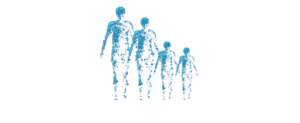











Visualization
Visualization is a powerful tool that uses imagination to guide you into the best version of yourself, living the greatest life you possibly can.
Proven studies have shown that the subconscious mind is not able to tell the difference between what is real and what is imaginary, therefore with learning the skills of visualization we can replace our old program with new ones, and have fun doing it.
Visualization is effective because it harnesses the power of our subconscious mind. When we visualize goals as complete, it creates a conflict in our subconscious mind between what we are visualizing and what we currently have.
Although visualization was regarded as “new age hype” for many years, research has shown that there is a strong scientific basis for how and why visualization works. It is now a well-known fact that we stimulate the same brain regions when we visualize an action and when we actually perform that same action. For example, when you visualize lifting your right hand, it stimulates the same part of the brain that is activated when you actually lift your right hand. This shared area of brain activation when we imagine an action and perform it has been demonstrated extensively in the scientific literature.
A striking example of how visualization increases brain activation is seen in an example of a stroke. When a person has a stroke due to a blood clot in a brain artery, blood cannot reach the tissue that the artery once fed with oxygen and nutrients, and that tissue dies. This tissue death then spreads to the surrounding area that does not receive the blood anymore. However, if a person with this stroke imagines moving the affected arm or leg, brain blood flow to the affected area increases and the surrounding brain tissue is saved. Imagining moving a limb, even after it has been paralyzed after a stroke, increases brain blood flow enough to diminish the amount of tissue death. This is a truly clear indicator of the power of visualization.
In fact, athletes have known about this power for a long time. Expert athletes use imagery and visualization to run their races in their goal times. Studies have shown that these athletes first imagine running the race in the goal time in as much detail as possible and are then able to execute it after practicing visualizing this. One study showed that visualizations under hypnosis enabled nationally ranked Stanford’s male gymnasts to execute for the first time several complex tricks that to many potential health benefits, including increased athletic performance, relief of anxiety and depression symptoms, improved relaxation, greater compassion for yourself and others, pain relief, improved ability to cope with stress, improved sleep, greater emotional and physical wellness.
